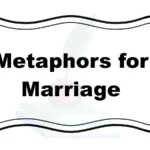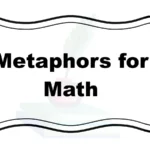Expressing strong emotions like anger can be challenging, especially when we want to communicate with warmth and understanding. Using vivid and thoughtful similes helps us describe feelings of being mad in a way that feels personal and meaningful. Instead of blunt or harsh words, these comparisons invite empathy and connection, making conversations more heartfelt.
Whether you’re writing, speaking, or simply reflecting on your feelings, finding the right simile can soften the message and open space for care. Let’s explore 25 similes for mad, complete with explanations, examples, and best ways to use them with kindness.
What Does “Mad” Mean?
Being mad usually means feeling angry, upset, or frustrated. It’s a natural human emotion when things don’t go as we want or when we feel hurt or misunderstood. However, madness isn’t always about shouting or aggression—it can also be a simmering irritation or a moment of disappointment. Understanding this range helps us choose words that reflect the depth and tone of anger we want to express.
When to Use “Mad”
Use similes for mad when you want to describe anger with color, creativity, or empathy. They work well in storytelling, everyday conversations, or written communication where you want to connect emotionally without sounding harsh. These similes can help diffuse tension by adding a touch of humor or relatability, especially when your goal is to express frustration but maintain warmth.
Pros and Cons of Using Similes for Mad
Pros:
- Adds vividness and emotion to communication
- Helps others understand the intensity of feelings
- Can soften harshness with creativity
- Encourages empathy and connection
Cons:
- Might be misunderstood if the simile is unfamiliar
- Can seem dramatic if overused
- Not always suitable for very serious or formal situations
1. Mad as a Hornet
Definition: Extremely angry and ready to react quickly.
Detailed Explanation: Hornets are known for their aggressive stings and defensive nature, making this simile perfect for describing sudden, sharp anger.
Scenario Example:
“When Jake found out someone scratched his car, he was mad as a hornet.”
Best Use: When anger is immediate and intense but not necessarily violent.
Tone: Slightly vivid and expressive.
Other ways to say it:
- Furious like a hornet
- Angry as a wasp
- Stingy with temper
2. Mad as a Wet Hen
Definition: Annoyed and agitated, often in a noisy or fussing way.
Detailed Explanation: Wet hens tend to be uncomfortable and noisy, which makes this simile great for describing someone who is irritable and complaining.
Scenario Example:
“She was mad as a wet hen after missing her train.”
Best Use: Mild to moderate frustration expressed with fussiness.
Tone: Light-hearted and informal.
Other ways to say it:
- Cross as a wet hen
- Peeved like a soaked chicken
- Fuming and flustered
3. Mad as a March Hare
Definition: Wildly or crazily angry, sometimes irrational.
Detailed Explanation: Based on the unpredictable behavior of hares in March, this simile highlights erratic anger or excitement.
Scenario Example:
“He was mad as a March hare when the team lost.”
Best Use: When anger seems a bit over the top or unpredictable.
Tone: Playful and vivid.
Other ways to say it:
- Crazy mad
- Berserk with anger
- Mad as a lunatic
4. Mad as a Bag of Cats
Definition: Very angry and restless, hard to calm down.
Detailed Explanation: Cats can be feisty and unsettled when put together, symbolizing chaotic anger.
Scenario Example:
“The children were mad as a bag of cats after losing the game.”
Best Use: Describing group anger or chaos.
Tone: Whimsical and expressive.
Other ways to say it:
- Wild as a swarm
- Restless fury
- Fuming like a catfight
5. Mad as a Bull
Definition: Enraged and ready to charge or confront.
Detailed Explanation: Bulls are often used to symbolize uncontrollable anger, especially when provoked.
Scenario Example:
“He charged at the door mad as a bull after hearing the news.”
Best Use: Intense and confrontational anger.
Tone: Powerful and vivid.
Other ways to say it:
- Furious as a bull
- Ready to charge
- Hot-tempered like a bull
6. Mad as a Wet Dog
Definition: Annoyed, frustrated, and shaking with agitation.
Detailed Explanation: Wet dogs tend to be uncomfortable and restless, expressing irritation.
Scenario Example:
“After being caught in the rain, she was mad as a wet dog.”
Best Use: Mild annoyance mixed with discomfort.
Tone: Informal and light.
Other ways to say it:
- Cross as a soaked pup
- Agitated like a wet dog
- Fidgety and annoyed
7. Mad as a Grizzly Bear
Definition: Extremely angry and potentially dangerous.
Detailed Explanation: Grizzly bears are fierce and territorial, making this simile perfect for describing fierce anger.
Scenario Example:
“When disturbed during his work, he got mad as a grizzly bear.”
Best Use: Serious anger that demands respect.
Tone: Serious and vivid.
Other ways to say it:
- Furious like a bear
- Fierce as a grizzly
- Roaring with anger
8. Mad as a Cat in a Room Full of Rocking Chairs
Definition: Nervous, agitated, and angry due to constant threats.
Detailed Explanation: This simile conveys a restless, uneasy anger caused by an uncomfortable situation.
Scenario Example:
“She was mad as a cat in a room full of rocking chairs during the meeting.”
Best Use: When anger mixes with anxiety or discomfort.
Tone: Descriptive and thoughtful.
Other ways to say it:
- Nervous as a cat
- Restless anger
- Anxious fury
9. Mad as a Beaver
Definition: Fierce, determined, and easily angered.
Detailed Explanation: Beavers are hardworking and protective, so this simile highlights anger tied to protectiveness or frustration.
Scenario Example:
“He was mad as a beaver when someone criticized his project.”
Best Use: When anger relates to protectiveness or hard work.
Tone: Expressive and earnest.
Other ways to say it:
- Protective fury
- Determined anger
- Fierce like a beaver
10. Mad as a Rat
Definition: Sneaky, irritated, and possibly vengeful.
Detailed Explanation: Rats are often seen as cunning and quick to react, making this simile good for sly or petty anger.
Scenario Example:
“She was mad as a rat after being left out of the decision.”
Best Use: When anger is quiet but sharp.
Tone: Slightly humorous and sly.
Other ways to say it:
- Petty fury
- Sneaky anger
- Quietly furious
11. Mad as a Ticked-Off Rattlesnake
Definition: Dangerously angry and ready to strike.
Detailed Explanation: Rattlesnakes warn before attacking, so this simile fits anger that is tense and potentially harmful.
Scenario Example:
“He was mad as a ticked-off rattlesnake after the betrayal.”
Best Use: Serious anger with warning signs.
Tone: Intense and cautionary.
Other ways to say it:
- Warning fury
- Dangerous anger
- Ready to lash out
12. Mad as a Firecracker
Definition: Explosive and sudden anger.
Detailed Explanation: Like a firecracker, this simile highlights anger that bursts unexpectedly.
Scenario Example:
“She went mad as a firecracker when she saw the mess.”
Best Use: Sudden, loud outbursts.
Tone: Energetic and vivid.
Other ways to say it:
- Explosive fury
- Sudden anger
- Bursting rage
13. Mad as a Stung Bee
Definition: Quick, sharp anger with pain.
Detailed Explanation: Bee stings cause immediate pain and reaction, symbolizing sharp anger.
Scenario Example:
“He was mad as a stung bee after the insult.”
Best Use: Quick and painful anger.
Tone: Sharp and reactive.
Other ways to say it:
- Sharp fury
- Painful anger
- Immediate rage
14. Mad as a Volcano
Definition: Slow-building anger that erupts powerfully.
Detailed Explanation: Like a volcano, anger here builds under the surface and eventually bursts out.
Scenario Example:
“Her frustration was mad as a volcano after months of delays.”
Best Use: Anger that builds and finally erupts.
Tone: Dramatic and powerful.
Other ways to say it:
- Eruptive fury
- Seething anger
- Explosive rage
15. Mad as a Caged Lion
Definition: Fierce anger mixed with frustration and feeling trapped.
Detailed Explanation: Lions are strong and proud, so anger feels powerful but confined.
Scenario Example:
“He was mad as a caged lion during the lockdown.”
Best Use: Anger combined with frustration or helplessness.
Tone: Powerful and emotional.
Other ways to say it:
- Fierce frustration
- Confined fury
- Roaring anger
16. Mad as a Powder Keg
Definition: Highly explosive and dangerous anger ready to ignite.
Detailed Explanation: Powder kegs explode with a spark, symbolizing volatile anger.
Scenario Example:
“The crowd was mad as a powder keg after the unfair ruling.”
Best Use: Tense situations ready to explode.
Tone: Intense and alarming.
Other ways to say it:
- Volatile fury
- Explosive temper
- Ready to blow
17. Mad as a Wildfire
Definition: Spreading anger that quickly grows out of control.
Detailed Explanation: Wildfires spread fast and destructively, symbolizing rapidly escalating anger.
Scenario Example:
“His frustration spread through the team mad as a wildfire.”
Best Use: When anger grows quickly and affects many.
Tone: Urgent and expansive.
Other ways to say it:
- Spreading rage
- Growing fury
- Uncontrolled anger
18. Mad as a Bear with a Sore Paw
Definition: Irritated and uncomfortable anger.
Detailed Explanation: Bears in pain are grumpy and irritable, perfect for mild but persistent anger.
Scenario Example:
“After the accident, he was mad as a bear with a sore paw.”
Best Use: Ongoing irritation with discomfort.
Tone: Rough but sympathetic.
Other ways to say it:
- Grumpy fury
- Irritable anger
- Persistent annoyance
19. Mad as a Dog with a Bone
Definition: Stubborn and relentless anger.
Detailed Explanation: Dogs won’t let go of bones, symbolizing anger that holds on and won’t fade.
Scenario Example:
“She was mad as a dog with a bone about the mistake.”
Best Use: Anger that is persistent and focused.
Tone: Determined and firm.
Other ways to say it:
- Relentless fury
- Stubborn anger
- Holding a grudge
20. Mad as a Bee in a Bonnet
Definition: Overly worried or agitated anger, often over small things.
Detailed Explanation: Bees buzzing inside a bonnet create nervous irritation, perfect for fussiness.
Scenario Example:
“He was mad as a bee in a bonnet over the schedule change.”
Best Use: Mild, focused irritation.
Tone: Playful and light.
Other ways to say it:
- Fussing fury
- Nervous anger
- Minor irritation
21. Mad as a Raging Storm
Definition: Powerful, overwhelming anger.
Detailed Explanation: Storms are intense and can be destructive, symbolizing uncontrollable anger.
Scenario Example:
“Her temper was mad as a raging storm after the argument.”
Best Use: Overwhelming, emotional anger.
Tone: Dramatic and emotional.
Other ways to say it:
- Furious tempest
- Overpowering rage
- Wild fury
22. Mad as a Twister
Definition: Whirlwind anger, fast and destructive.
Detailed Explanation: Twisters swirl violently, symbolizing chaotic anger.
Scenario Example:
“He blew up mad as a twister when he heard the news.”
Best Use: Sudden, chaotic anger.
Tone: Energetic and forceful.
Other ways to say it:
- Whirlwind fury
- Chaotic anger
- Spinning rage
23. Mad as a Chimpanzee
Definition: Loud, wild, and unpredictable anger.
Detailed Explanation: Chimpanzees can be loud and dramatic, perfect for expressive anger.
Scenario Example:
“The kids were mad as chimpanzees after losing the game.”
Best Use: Loud, youthful anger.
Tone: Playful and vivid.
Other ways to say it:
- Wild fury
- Loud anger
- Boisterous rage
24. Mad as a Squirrel in a Nutshell
Definition: Nervous and irritable anger, often feeling trapped.
Detailed Explanation: Squirrels are quick and anxious, symbolizing jittery anger.
Scenario Example:
“She was mad as a squirrel in a nutshell before the presentation.”
Best Use: Nervous, contained frustration.
Tone: Light and relatable.
Other ways to say it:
- Anxious fury
- Jittery anger
- Restless frustration
25. Mad as a Lioness Protecting Her Cubs
Definition: Fierce, protective, and powerful anger.
Detailed Explanation: Lionesses are deeply protective, and this simile shows angry determination for those we care about.
Scenario Example:
“She was mad as a lioness protecting her cubs when someone insulted her family.”
Best Use: Protective and strong anger.
Tone: Noble and fierce.
Other ways to say it:
- Protective fury
- Fierce rage
- Defiant anger
Conclusion:
Using similes for mad allows us to express anger in ways that resonate with empathy and creativity. Whether your anger is sudden like a firecracker or slow-building like a volcano, these comparisons help paint a vivid picture of your feelings. They can soften the blow, invite understanding, and make communication more heartfelt. Remember, anger is a normal emotion—how we express it can either build bridges or walls. Choosing the right words with care can make all the difference in connecting with others.
MCQs:
1. What does the simile “mad as a hornet” imply?
A) Peaceful and quiet
B) Slightly irritated
C) Extremely aggressive and quick to anger
D) Mildly surprised
Answer: C) Extremely aggressive and quick to anger
2. Which situation best fits the simile “mad as a wet hen”?
A) A person quietly sulking
B) A mother protecting her child
C) Someone ranting loudly after a misunderstanding
D) Someone trying to calm others down
Answer: C) Someone ranting loudly after a misunderstanding
3. What tone does the phrase “mad as a March hare” convey?
A) Wild and unpredictable anger
B) Calm and collected
C) Deep sadness
D) Joyful excitement
Answer: A) Wild and unpredictable anger
4. “Mad as a bull in a china shop” suggests someone is…
A) Careful and deliberate
B) Calm and collected
C) Clumsy and dangerously angry
D) Shy and awkward
Answer: C) Clumsy and dangerously angry
5. Which simile would best describe someone quietly seething?
A) Mad as a firecracker
B) Mad as a mute volcano
C) Mad as a marching band
D) Mad as a hornet
Answer: B) Mad as a mute volcano
6. What does “mad as a bag of cats” typically imply?
A) Calm and collected
B) Playfully confused or wildly chaotic
C) Happy and satisfied
D) Nervous and anxious
Answer: B) Playfully confused or wildly chaotic
7. Which simile conveys a sarcastic or passive-aggressive anger?
A) Mad as a mime in traffic
B) Mad as a lion
C) Mad as a firecracker
D) Mad as a storm cloud
Answer: A) Mad as a mime in traffic
8. “Mad as a snake” is most closely associated with…
A) Quick, sneaky bursts of fury
B) Calm and collected thinking
C) Happy and joyous behavior
D) Nervous talking
Answer: A) Quick, sneaky bursts of fury
9. If someone is described as “mad as thunder,” their anger is likely…
A) Quiet and hidden
B) Loud and impossible to ignore
C) Passive-aggressive
D) Rational and reasoned
Answer: B) Loud and impossible to ignore
10. Which of these similes shows anger building up slowly over time?
A) Mad as a volcano
B) Mad as a microwave
C) Mad as a balloon
D) Mad as a boiling kettle
Answer: D) Mad as a boiling kettle
11. The simile “mad as a toddler denied candy” evokes which emotion?
A) Deep sorrow
B) Quiet disappointment
C) Dramatic and exaggerated anger
D) Peaceful disagreement
Answer: C) Dramatic and exaggerated anger
12. What type of anger does “mad as static on a radio” suggest?
A) Sudden and crackly, but not long-lasting
B) Calm and collected
C) Deep and emotional
D) Loud but meaningless
Answer: A) Sudden and crackly, but not long-lasting
13. Which of these similes is best used humorously?
A) Mad as a snake
B) Mad as a bull in a china shop
C) Mad as a bag of cats
D) Mad as thunder
Answer: C) Mad as a bag of cats
14. “Mad as a firecracker” usually implies what kind of anger?
A) Quick to ignite, short-lived
B) Calm and collected
C) Cold and long-lasting
D) Indifferent
Answer: A) Quick to ignite, short-lived
15. Which simile might describe a leader who explodes under pressure?
A) Mad as a mime
B) Mad as a lion
C) Mad as a broken record
D) Mad as a balloon
Answer: B) Mad as a lion
FAQs:
1. Why use similes instead of just saying “mad”?
Using similes adds color and depth to your expression. It helps convey how someone is mad, not just that they are. This makes your message more personal, vivid, and relatable, allowing others to understand your feelings better and creating stronger emotional connections.
2. Can similes for “mad” be used in formal writing?
Similes can be effective in both formal and informal contexts, but it depends on the tone you want to set. In formal writing, choose similes that are clear and respectful. For casual or creative writing, feel free to use more playful or vivid similes to engage your reader warmly.
3. Are some similes better for expressing mild anger versus intense anger?
Absolutely! Some similes like “mad as a wet hen” or “mad as a bag of cats” suggest frustration or mild irritation, while others like “mad as a bull in a china shop” or “mad as thunder” express intense or explosive anger. Choosing the right simile helps you communicate your emotions more precisely.
4. How can I tell if a simile fits the tone I want to express?
Think about the situation and the emotions involved. If you want to sound empathetic and understanding, choose softer or humorous similes. For expressing serious anger, select similes that show intensity. Always consider your audience and the feelings you want to evoke.
5. Can similes for “mad” help in calming down during conflict?
Yes! Sometimes putting anger into words through similes can help externalise feelings and make them easier to manage. Using creative and thoughtful similes can also soften harsh emotions, allowing for more compassionate communication and understanding.




